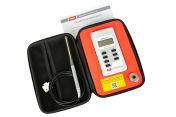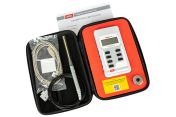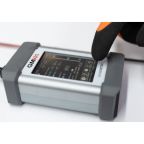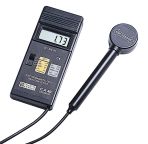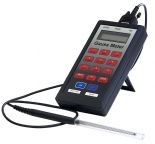Gaussmeters
A gaussmeter, also known as a magnetometer, is a device used to measure the strength and direction of a magnetic field. Gaussmeter's are simple to use and handheld versions are available which can be carried to monitor magnetic fields as you walk. The device may also be referred to as an electromagnetic field detector, or EMF detector for short.
Types of gaussmeter
Scalar Gaussmeter: measures the strength of the magnetic field present in the area around the device* Vector Gaussmeter: measures the direction of the magnetic field depending on where the device is and which direction it's pointing.
How do you use a Gaussmeter?
Place the magnet at the end of the probe and then slide it across the sensor. Hold it in this position for a few seconds while noting the reading on the Gaussmeter's display. The highest value produced by the meter is the magnetic flux density of the gauss meter.
How do they work?
The screen provides a reading of how strong the magnetic field is and may indicate the direction it's coming from. If the person holding it walks closer to the magnetic source the reading will rise and lowers if they walk away. Multiple sources can create conflicting readings, however, and may require more advanced technology to determine where the sources are coming from. Changes in the magnetic field depend on where the user is and the strength of the Earth's magnetosphere in that particular area. The sun interacts with areas of the magnetosphere differently and the strength of the signal can fluctuate with the sun's activity. Certain natural materials, such as specific rocks or rock formations, may also interfere with the Gaussmeter's reading.
Gaussmeters have a number of uses
- Valuable tool in space exploration for learning more about the magnetism of foreign planets and other bodies in space
- Detect certain landscape formations, used in geophysics to get an idea of how the land is laid out
- Detect hidden items such as shipwrecks and are at work in metal detectors and security teams to detect guns or other weapons
- Gaining popularity in cell phones


